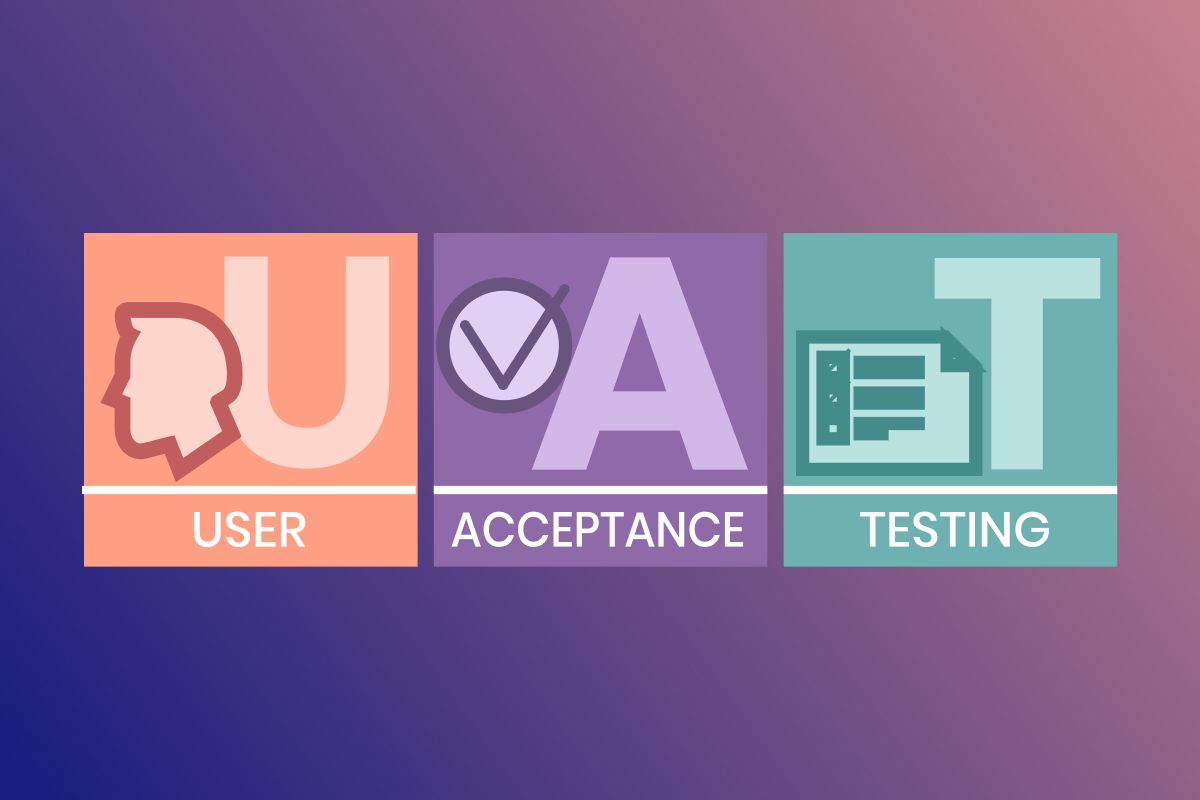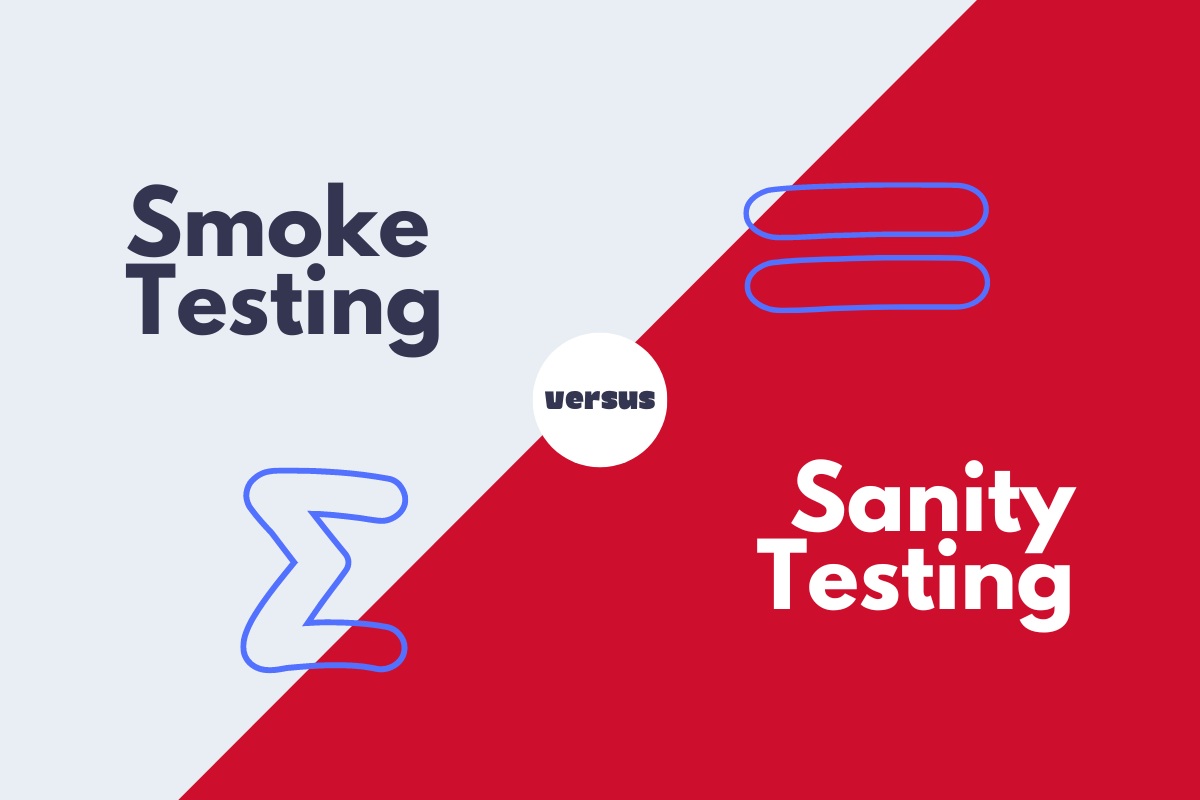User acceptance testing, or UAT, is the last phase of software testing. It is a crucial final stage before a software application, system, or website goes live. Essentially, it involves real-world users evaluating the product to see if it meets their needs and expectations.
That would also be our touch base for today’s blog: definition, best practices, benefits and drawbacks, challenges of user acceptance testing,
What is User Acceptance Testing (UAT)?
User acceptance testing (UAT), also known as end-user testing, is a crucial last phase in software development. In this phase, the software undergoes testing by its intended audience in real-world scenarios. Typically, UAT is the final stage of the testing process and occurs just before the software’s release to the market. The primary objective of UAT is to validate that the software meets the requirements and performs as expected in real-world usage.
During UAT, users have the opportunity to interact with the software and identify any overlooked features or bugs. This testing can be conducted in-house with volunteer users, through paid test subjects, or by providing a trial version for download. Feedback from early testers is then offered to developers, who make final adjustments before the software’s commercial release.
UAT is valuable for guaranteeing software quality within specified timeframes and budgets while fostering user transparency. Additionally, UAT allows developers to work with actual use cases and data, and successful testing validates business requirements.
The General types of UAT
Various types of software tests fall under user acceptance testing. These tests encompass:
- Alpha Testing: Developers within the organization conduct the initial testing phase before releasing the software to end-users.
- Beta Testing: The software is distributed to groups of end users who evaluate its functionality and provide feedback for further improvements.
- Black Box Testing: End users assess specific software functions without access to the internal code.
- Operational Acceptance Testing: This focuses on the software’s readiness for operation, including product compatibility, reliability, and stability, based on predefined workflows.
- Contract Acceptance Testing: Testing is conducted according to specific criteria and specifications outlined in the project contract.
- Regulation Acceptance Testing: This test ensures compliance with legal rules and regulations governing the software.
Why Bother Conducting User Acceptance Testing?
It’s a well-known fact that users have a different perspective than developers, and consequently, they interact with software uniquely. In the scenario described above, the developers clearly understood the website’s information structure, having designed it themselves. However, they overlooked the importance of incorporating design elements to clarify navigation for the average user. Jakob Nielsen says, “Guessing at users’ needs is a recipe for disaster.” Since designers often have different preferences and perspectives from the target audience, relying solely on personal preferences can be misleading.
User Acceptance Testing (UAT) aims to bridge this gap by testing software to ensure it aligns with user expectations and business requirements. Developers construct software based on their interpretation of the requirements, which may differ significantly from user expectations due to their unique perspective and familiarity with the product. Additionally, there may be discrepancies between what the business believes it needs (its requirements) and what users actually expect. Moreover, business requirements may evolve throughout the development process, potentially leading to misalignment between the final platform configuration and business expectations if these changes are not effectively communicated to the development team.
What is the underlying purpose of UAT?
Here’s why we utilize UAT:
- To ensure the software or system aligns with the user’s needs.
- This is to confirm that all user interactions and workflows function correctly.
- To collect feedback from end users and stakeholders to enhance the software’s usability and user experience.
- To evaluate the software’s quality, reliability, and performance from the user’s perspective.
- To mitigate risks linked to deploying faulty or unfinished software to production.
- To instill confidence in stakeholders that the software is prepared for release.
Who Performing the UAT?
User acceptance testing is typically conducted by end users, who are best suited to evaluate the software’s usability and suitability for daily use. They know firsthand how the software will be utilized and can pinpoint necessary adjustments for optimal functionality.
Internal functional experts also contribute to UAT by guiding test cycles, managing testing processes, and interpreting results. These experts include:
- Business Analysts: Business analysts who are well-versed in business requirements and objectives assist in defining test scenarios and ensuring the system aligns with these specifications.
- Quality Assurance (QA) Team: The QA team orchestrates UAT, collaborating closely with end users to plan, execute, and monitor test cases. They report any discovered issues or defects and oversee their resolution.
- Development Team: Developers may participate in UAT to address technical issues or bugs that have been identified. They collaborate with end users and QA to rectify these issues before the final software release.
- Project Managers: Project managers oversee the UAT process, ensure its progress is according to schedule, and meet project goals. They manage resources, offer guidance, and communicate progress to stakeholders.
- Stakeholders: Stakeholders, including senior management or clients, may engage in UAT to validate that the system fulfills their expectations and requirements.
UAT relies on these individuals’ collaborative efforts to ensure the system’s readiness for deployment. They thoroughly evaluate its usability, functionality, and alignment with business needs.
How to Conduct UAT and Tips for Enhancing Effectiveness
Conducting a user acceptance test involves several steps, varying depending on the team’s preferences for defining each step. Typically, these steps include:
Planning: Outline the business requirements, time frame, and UAT strategies.
Test Scenario Creation: Identify and develop real-world test scenarios covering various functional cases.
Team Selection: Select end users with firsthand business knowledge who can detect and report issues effectively.
Testing and Documentation: End users test the software, logging any bugs or issues encountered, which are then recorded in a bug tracker.
Code Adjustment and Retesting: The development team adjusts the code based on test results, resolving bugs or making necessary changes, followed by retesting.
Once the software meets user criteria, the changes are signed off. To enhance the effectiveness of UAT, consider the following strategies:
Define Clear Objectives: Ensure all stakeholders understand the goals and objectives of the UAT phase.
Involve Key Stakeholders: Representatives from relevant stakeholder groups should be included in the UAT process to ensure alignment with business requirements.
Develop Comprehensive Test Scenarios: Create realistic test scenarios covering all relevant business processes and workflows.
Provide Adequate Training: Ensure end-users receive sufficient training on the software and testing process.
Establish Clear Communication Channels: Maintain open communication channels between project teams, end users, and stakeholders.
Use Realistic Test Data: Utilize realistic datasets during testing to simulate real-world scenarios accurately.
Document Test Results and Issues: Using a structured approach, document all test results and issues encountered during testing.
Encourage User Engagement: Foster active participation and engagement from end users throughout the UAT process.
Perform Iterative Testing: Conduct multiple testing rounds to refine the software based on user feedback.
Evaluate Test Coverage and Quality: Regularly assess test coverage and the quality of test cases to ensure all critical functionalities are adequately tested. Adjust test scenarios and priorities as needed.
Challenges in User Acceptance Testing
User acceptance testing (UAT) can encounter several challenges that may impact effectiveness. Some of these challenges include:
Inadequate Test Planning: Delays in earlier stages of the software development lifecycle can lead to time constraints and pressure to rush through UAT.
Selection of Untrained UAT Users: UAT testers need proper training to accurately report bugs or issues, leading to misunderstandings and incomplete testing.
Lack of resources: Insufficient resources can pose a challenge during UAT, demanding support from numerous dedicated individuals across various departments and teams. Coordinating an adequate number of testers can be challenging. In cases where few testers are available, opting for smaller test scenarios with fewer test cases might be beneficial. Additionally, planning to implement the UAT process gradually over time can help mitigate this challenge.
Testing Environment and Deployment Issues: Using the same environment for UAT as in functional and system testing may result in software dependencies specific to that environment. To avoid such issues, it is advisable to utilize a separate environment for UAT.
Communication Gaps: Poor communication between UAT and testing teams can cause delays and hinder effective reporting of bugs or testing scenarios.
UAT Best Practices
Effective user acceptance testing (UAT) relies on several best practices to ensure thorough and accurate testing. Here are some essential practices to consider:
Gather Comprehensive Information: Collect relevant data, including the processes to be tested, testing procedures, and guidelines for selecting test data. This information forms the foundation for successful UAT execution.
Identify Target Audience: Identify and involve UAT users with the necessary knowledge and expertise to provide valuable feedback.
Understand Project Scope: Clearly define the scope and identify specific processes or functionalities requiring testing.
Design Test Cases Thoughtfully: Develop detailed test cases that outline testing steps, expected outcomes, and verification conditions. Assign testing tasks to different users as needed, ensuring comprehensive coverage of test scenarios.
Confirm Business Objectives: Once testing is complete and any identified issues are resolved, obtain sign-off confirmation to validate that changes align with business requirements and objectives. This step ensures the software meets the intended purpose and meets stakeholder expectations.
Overcome the UAT challenges
Buggy software is a headache for everyone involved, from employees to customers, and can seriously harm a company’s reputation. User Acceptance Testing (UAT) is crucial in preventing the premature launch of ineffective, faulty, or incomplete software products. It ensures that the software matches user expectations and is fit for purpose from an end user’s perspective. Without UAT, even software that has undergone extensive internal testing could be released with undiscovered defects, as developers may not perceive the product in the same way as end users.
However, executing UAT successfully is a complex task. It requires careful planning, thorough documentation, and transparent communication throughout the process. Despite the challenges, many business leaders recognize the value of UAT, as it helps ensure that developers deliver high-quality software that meets user expectations and enhances business operations. When all is in doubt, contact to receive a private consultation with Shift Asia specialists for help. We might not cover all the obstacles, but we’ll ensure you get through them at the lowest stake possible.
ContactContact
Stay in touch with Us




